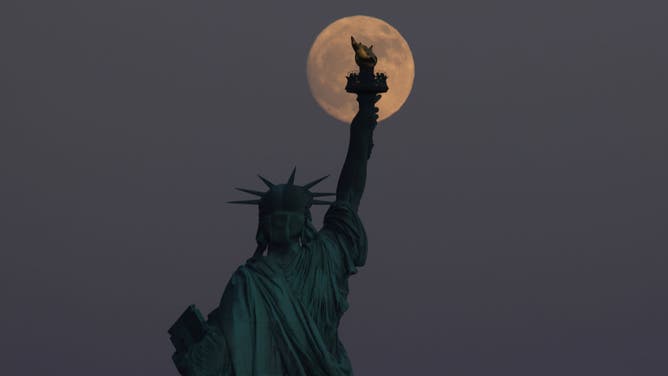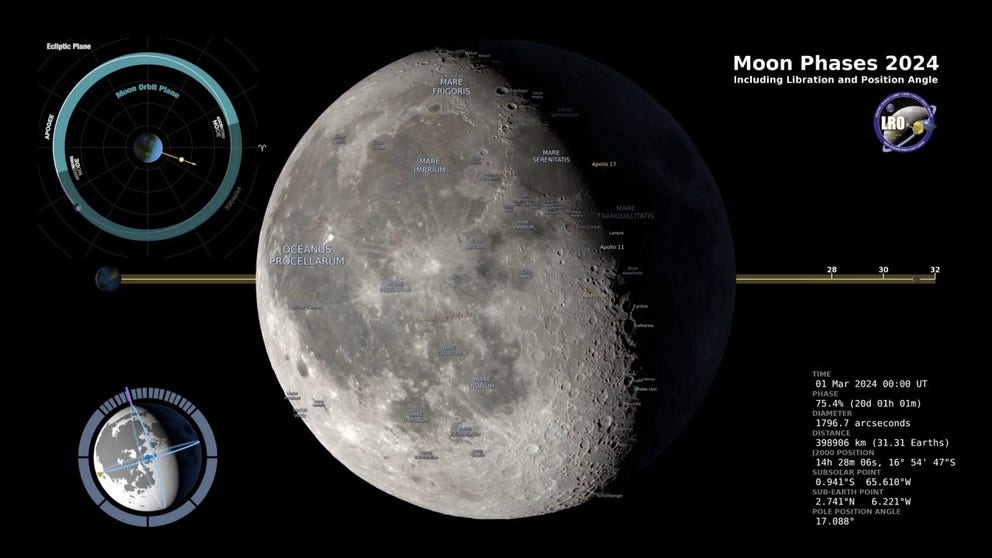Full 'Strawberry Moon' welcomes first day of summer
The full Strawberry Moon on June 21 will appear extremely low on the horizon, the lowest Moon of the year. June's full Moon also happens a day after summer solstice, the longest day of the year and the official start of astronomical summer.
2024 Moon phases for the Northern Hemisphere
NASA produced rendering of the Moon's phases during 2024.
June's full Moon is unique this year because it will rise a day after the official start of summer and be the lowest full Moon of the year.
With the scorching temperatures across the U.S., it's already felt like summer for weeks, and if you ask a meteorologist, it's been summer since June 1. However, the official start of astronomical summer begins with the summer solstice, which happens every year between June 20 and 22.
This year, the summer solstice began Thursday at 4:51 p.m. ET when the Tropic of Cancer aligned directly with the Sun. The very next night, on Friday, June 21, the Strawberry Moon will rise at 9:08 p.m. ET.

JERSEY CITY, NJ - JUNE 20: The Strawberry Moon rises behind the Statue of Liberty as the sun sets on the summer solstice in New York City on June 20, 2024, as seen from Jersey City, New Jersey.
(Gary Hershorn / Getty Images)
According to NASA, June's full Moon will be the lowest of the year, reaching only 21.9 degrees above the southern horizon after midnight on Saturday. This happens because as the full Moon reaches its peak illumination, the Sun is at its highest of the year. For some places within the Arctic Circle, the Moon won't make it above the horizon.
WHY ARE EARLIEST SUNRISES A WEEK OR MORE BEFORE THE SUMMER SOLSTICE?
The low position should make the Strawberry Moon appear larger than other full Moons but not like a Supermoon, which happens when the Moon is closer in its orbit to Earth during a full Moon.
The Moon will appear full and bright beginning on Thursday and for about three days after.
According to The Old Farmer's Almanac, June's full Moon gets its name from North American Indian tribes, including the Ojibwe, Dakota and Lakota for the time when strawberries are ripe to be picked. The Moon is also known as Blooming Moon, Green Corn Moon and Hoer Moon.
Full Moon forecast
Friday night's sky-gazing forecast includes some cloud cover for parts of the Plains, Northeast and South Florida.
As the tropics get going, for the busy hurricane season forecast this year, states along the Gulf of Mexico, including Texas, could be facing their first tropical system of 2024, which won't help with sky-gazing this week.
Meanwhile, wildfire season is in full swing for the Southwest and California, sending smoke throughout the region. Smoke will continue to obscure views of the night sky as massive wildfires continue to burn.

(FOX Weather)
